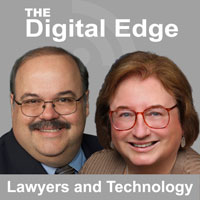Ride the Lightning
Cybersecurity and Future of Law Practice Blog
by Sharon D. Nelson Esq., President of Sensei Enterprises, Inc.
Court Rules That AI Cannot Qualify as an Inventor
September 16, 2021
The National Law Review reported on September 9 that the U.S. District Court for the Eastern District of Virginia had ruled on September 3, 2021 that an AI machine cannot qualify as an “inventor” under the Patent Act. The decision in Thaler v. Hirshfeld will likely be appealed to the Federal Circuit.
Two countries, Australia and South Africa, have permitted AI systems to qualify as “inventors” in patent applications. While some hoped for a worldwide trend, that hope has been dashed for now.
Patent applicant Stephen Thaler and his AI system called DABUS (“Device for Autonomous Bootstrapping of Unified Sentience”) were the focus of the decision. Naming DABUS as an inventor of his applications, Thaler obtained a South African patent without debate, and successfully argued to an Australian court that the Australia Patents Act should have a flexible interpretation of “inventorship” to include AI, because such interpretation would promote innovation and further pharmaceutical research. The USPTO, however, rejected Thaler’s application, concluding that an inventor must be a natural person under the Patent Act. Thaler asked the U.S. District Court for the Eastern District of Virginia to vacate the USPTO’s decision and reinstate his patent application.
The Court, on motions for summary judgment, affirmed the USPTO’s determination that an inventor must be a natural person. Focusing on the “plain language” of the 2011 America Invents Act, which provided “an explicit statutory definition for the term ‘inventor,’” the Court’s decision came down to the meaning of the word “individual.”
The Court found that meaning in a Supreme Court decision construing the term “individual” in the Torture Victim Protection Act (“TVPA”) to mean “natural person[].” Although concerning different subject matter than the Patent Act, the District Court applied the Supreme Court’s definition of “individual” because, like the TVPA, the Patent Act used the term “individual” in its “ordinary usage,” which was “to refer to a human being.” 35 U.S.C. § 115(b) references the “individual” as “himself or herself,” which the Court found evidenced Congress’s clear intent to “referenc[e] a natural person.” Further supporting this interpretation, according to the Court, were the Federal Circuit’s “consistent holdings” (though in a different context) that “inventors must be natural persons.”
Thaler had encouraged the Court to interpret inventorship in a manner “consistent with the Founders’ intent in enacting the Patent and Copyright Clause,” which, according to Thaler, was “to promote disclosure of information and commercialization of new technologies.” Taking too literal a reading of “inventor,” he argued, would frustrate this intent, particularly where “it is unlikely that Congress anticipated and legislated for the specific circumstances at issue.”
Thaler warned that “excluding an entire class of inventions from patentability would undermine the patent system,” as AI-generated inventions may “one day become the primary source of innovation.” The Court did not accept those arguments, which the Court characterized as based in policy rather than law. The court found that Thaler’s positions could not “override the plain meaning of a statutory term,” and in any event, “[m]atters of policy are for Congress, not the courts, to decide.” If Congress intended AI systems to be considered as “inventors,” the Court found, Congress could have explicitly included AI systems in the definition, added in 2011, “when artificial intelligence was already in existence.”
As might be expected, the decision now leaves unresolved how to obtain patent protection on innovations generated by AI systems. It is interesting that the USPTO’s summary judgment brief hinted at a potential solution— “the use of a machine as a tool by natural person(s) does not generally preclude natural person(s) from qualifying as an inventor or joint inventors if the natural person(s) contributed to the conception of the claimed invention.” That does not of course answer the question of what happens when no natural person contributes to the invention.
Sharon D. Nelson, Esq., President, Sensei Enterprises, Inc.
3975 University Drive, Suite 225, Fairfax, VA 22030
Email: Phone: 703-359-0700
Digital Forensics/Cybersecurity/Information Technology
https://senseient.com
https://twitter.com/sharonnelsonesq
https://www.linkedin.com/in/sharondnelson
https://amazon.com/author/sharonnelson

